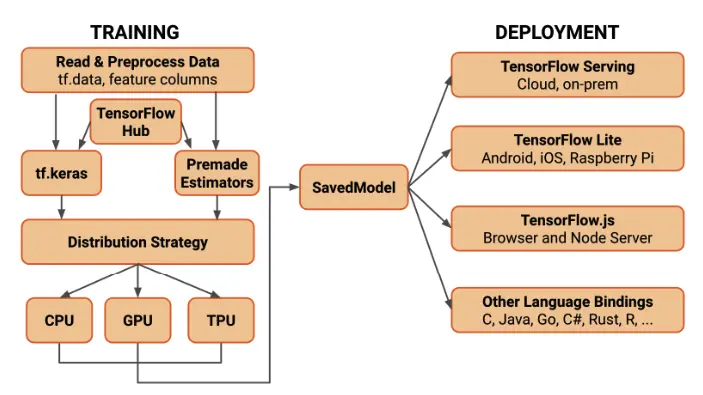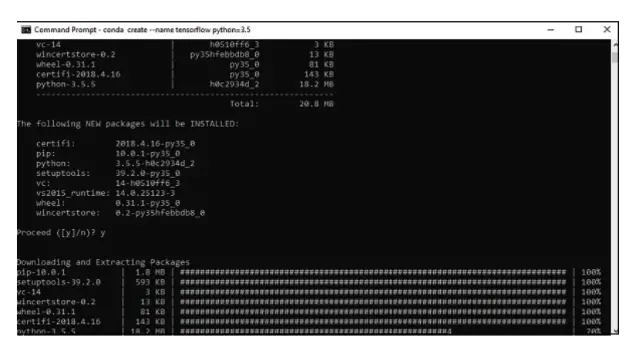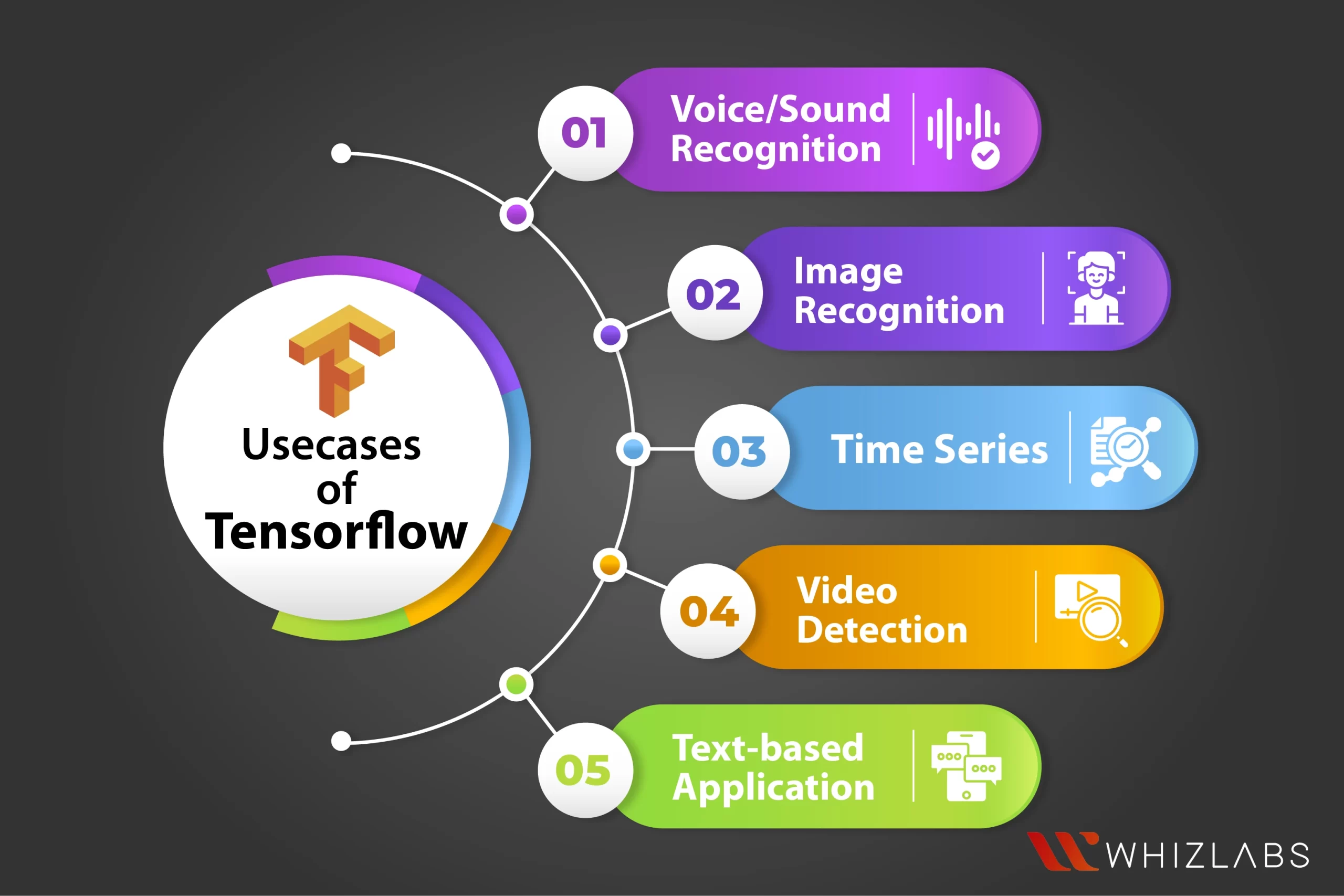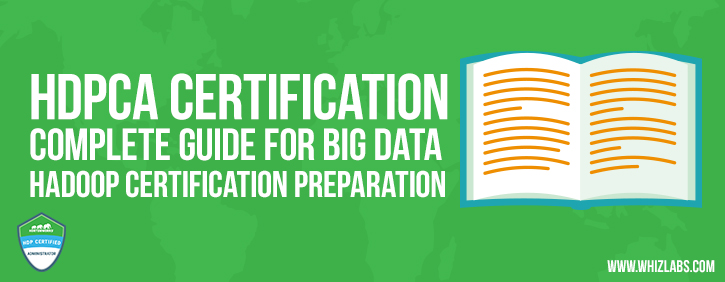TensorFlow is a Python-friendly open-source library that is built for doing numerical computation to develop machine learning and neural networks faster and easier.
In this blog article, we will have a quick overview of TensorFlow meaning, its features, how it works, TensorFlow components, TensorFlow applications, and Tensorflow tutorial.
Let’s dive in to know more!
What is TensorFlow?
TensorFlow is an open-source ML platform released by Google. It integrates tools for the developers and data scientists to build, implement, and train the machine learning models. It was formerly released in the year 2015 and it continues to evolve with additional features over the years.
Tensorflow library allows software developers to design intricate neural networks with the usage of programming languages such as Javascript and Python. In addition, Tensorflow helps to deploy the machine learning models on cloud platforms such as Google Cloud Platform (GCP) and Amazon Web Services (AWS).
TensorFlow is employed for deep learning applications, such as natural language processing (NLP), object detection, image recognition, text classification, recommendation systems, and so on.
Also Read : All You Should Know About Big Data
Tensorflow features
Tensorflow has unique features as follows:
- TensorFlow offers high-level APIs for easy model development with Neural Networks
- It handles complex numeric computations efficiently, suitable for large datasets
- Provides a rich set of both low-level and high-level Machine Learning APIs
- Supports training and computation on both CPU and GPU
- Includes pre-trained models and datasets for quick development
- Allows deployment on mobile and embedded devices, making it production-ready
- Utilizes Tensorboard for visualization
- Seamlessly integrates with Keras, a popular high-level API
- TensorFlow is open source, and free for building and deploying Machine Learning models.
How does TensorFlow work?
With TensorFlow, you can construct dataflow graphs to illustrate the flow of data. In this graph, nodes represent mathematical operations, and connections or edges between nodes are multi-dimensional data arrays. You can think of this as building a flowchart of operations that can be applied to multi-dimensional input arrays, allowing you to define and visualize how data moves through the system.
TensorFlow applications are versatile and can run on a wide range of devices, from your local PC to cloud clusters, and even on mobile devices like iOS and Android phones. For added acceleration, Google offers its specialized TensorFlow Processing Unit (TPU) hardware for TensorFlow in its cloud environment.
TensorFlow models can be deployed and utilized on nearly any compatible machine for making predictions, ensuring flexibility and widespread applicability.
Tensorflow Architecture

TensorFlow is structured into several layers, each serving a specific purpose in the framework:
- Device and Network Layer
The first layer handles device communication, allowing TensorFlow to work with various devices like GPUs, CPUs, and TPUs. It also includes networking implementations for communication between different machines in a distributed training setup.
- Kernel Implementations
The second layer contains kernel implementations for applications commonly used in machine learning. These kernels provide the foundational building blocks for various machine-learning tasks.
- Distributed Execution Layer
The third layer includes the distributed master and dataflow executors. The distributed master is responsible for distributing workloads across different devices in the system, optimizing resource usage. The dataflow executor efficiently manages data flow graphs.
- API Layer
The next layer exposes TensorFlow’s functionalities through APIs. These APIs are implemented in the C programming language due to their speed, reliability, and cross-platform compatibility. They serve as the core interface for working with TensorFlow.
- Client Support
The fifth layer provides support for both Python and C++ clients. This ensures that TensorFlow can be seamlessly integrated into applications and workflows using these popular programming languages.
- Training and Inference Libraries
The final layer encompasses training and inference libraries implemented in both Python and C++. These libraries enable users to develop, train, and deploy machine learning models using TensorFlow, making it a versatile and accessible framework for a wide range of applications.
This layered architecture is designed to offer flexibility, performance, and accessibility to developers and researchers working with machine learning and deep learning tasks.
Components of Tensorflow
In the TensorFlow playground, here are the major components for your consideration:
Tensor
The core component of TensorFlow is the tensor. Every computation activity in the Tensorflow is taken care of by the tensors. It is an array of matrices with n dimensions and contains multiple data types. Tensor can be the result of computation or it may originate from input data.
Graphs
It shows all the operations that occur in the training. Every operation can be termed as an op node and it will be connected to each other. The graph comprises of nodes and connections between nodes but it will not show off any values.
Dimensions and ranks
Tensors are a generalization of vectors and matrices, accommodating data of varying dimensions and ranks. Dimensions refer to the size of array elements, while ranks denote the number of dimensions used to represent the data. For instance, a scalar is rank 0, a vector is rank 1, and a matrix is rank 2. Tensors can have higher ranks, such as 3 or more.
Data flow graphs
Data flow graphs come into play when performing computations on tensor data. Unlike traditional sequential programming, TensorFlow builds data flow graphs with nodes that execute when a session is created.
The graph processes data fed in the form of placeholders, variables, and constants. TensorFlow allows for efficient execution on CPUs or GPUs, and distributed processing across multiple processors, which is particularly valuable for deep learning tasks due to their extensive data and training requirements.
Tensorflow tutorial for beginners
To install TensorFlow, you should have Python installed on your system, and it’s recommended to use Python version 3.4 or higher for the best compatibility with TensorFlow. Here are the steps to install TensorFlow on a Windows operating system:
Step 1: Verify the installed Python version on your system. Make sure it’s Python 3.4 or higher.
Step 2: You can choose to install TensorFlow using tools like “pip” or “Anaconda.” Pip is a command used for installing Python modules.
Before installing TensorFlow, it’s a good practice to install the Anaconda framework on your system. After a successful Anaconda installation, you can check it by running the “conda” command in the command prompt.
Step 3: Execute the following command to initiate the TensorFlow installation:
This command will download the necessary packages required for setting up TensorFlow.
Step 4: After successfully setting up the environment, it’s essential to activate the TensorFlow module:
conda create –name tensorflow python = 3.5
Step 5: Use “pip” to install TensorFlow on your system. You can do this with the following commands:
or, if you want to install the GPU version:
pip install tensorflow-gpu
After successfully installing TensorFlow, you can proceed to run sample programs to get familiar with how TensorFlow works and its capabilities. This will help you make the most of this powerful machine-learning framework.
Applications of TensorFlow
Tensorflow is used in a wide range of applications such as natural language processing, image recognition, predictive analysis, and autonomous vehicle control. Deep neural network training can be done for object classification and detection, providing feedback, image classification, and designing voice-based applications.
In addition, it is employed in forecasting activity, algorithmic trading, text-based applications, and optimization. In healthcare, tensorflow is used for medical diagnosis and drug discovery.
These use cases showcase the flexibility and potency of TensorFlow, providing data scientists and developers with a tool that can handle complex machine learning tasks in significantly less time compared to conventional methods.
FAQs
Can a beginner use TensorFlow?
Yes, TensorFlow is beginner-friendly and you can create machine learning models for the desktop, mobile, web, and cloud.
Does TensorFlow need coding?
Yes, coding knowledge is required to use the Tensorflow. Python is the most used programming language in the TensorFlow.
How TensorFlow play a major role in the future?
TensorFlow consistently earns high rankings as one of the top Python libraries for machine learning. It’s trusted by individuals, businesses, and governments globally for its ability to drive AI advancements. TensorFlow serves as a foundational tool for conducting AI experiments, allowing developers to test and refine their ideas before taking them to market. Its attractiveness lies in its minimal dependencies and investment requirements, making it a valuable asset for AI development.
Does ChatBot use TensorFlow?
Yes, the AI ChatBot utilizes Python TensorFlow and Natural Language Processing (NLP) with TFLearn as its learning engine. It can interact in multiple ways, and each of these modules functions independently. Moreover, you have the option to train your data model to tailor it to your specific business needs.
Conclusion
Hope this article has provided a comprehensive overview of the TensorFlow at hand. It has covered the key aspects of TensorFlow, explained important concepts, and TensorFlow use cases, and much more.
As AI technology continues to advance, the utilization of TensorFlow in these applications is on the rise. Therefore, contemplating a career in TensorFlow can be highly valuable.
To gain practical experience, you can utilize our hands-on labs and sandboxes to experiment with TensorFlow.
- Top 25 AWS Data Engineer Interview Questions and Answers - May 11, 2024
- What is Azure Synapse Analytics? - April 26, 2024
- AZ-900: Azure Fundamentals Certification Exam Updates - April 26, 2024
- Exam Tips for AWS Data Engineer Associate Certification - April 19, 2024
- Maximizing Cloud Security with AWS Identity and Access Management - April 18, 2024
- A Deep Dive into Google Cloud Database Options - April 16, 2024
- GCP Cloud Engineer vs GCP Cloud Architect: What’s the Difference? - March 22, 2024
- 7 Ways to Double Your Cloud Solutions Architect Role Salary in 12 Months - March 7, 2024






